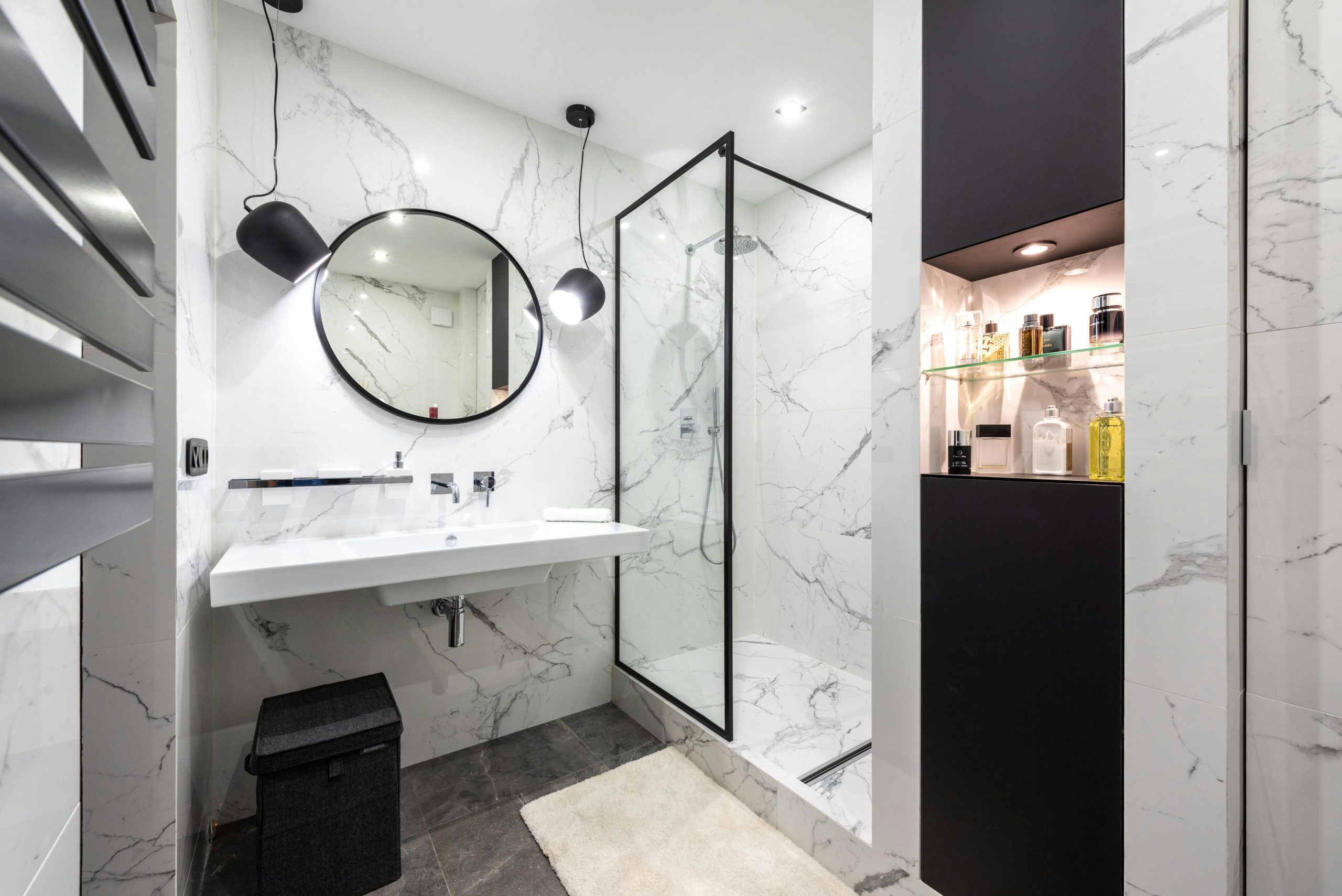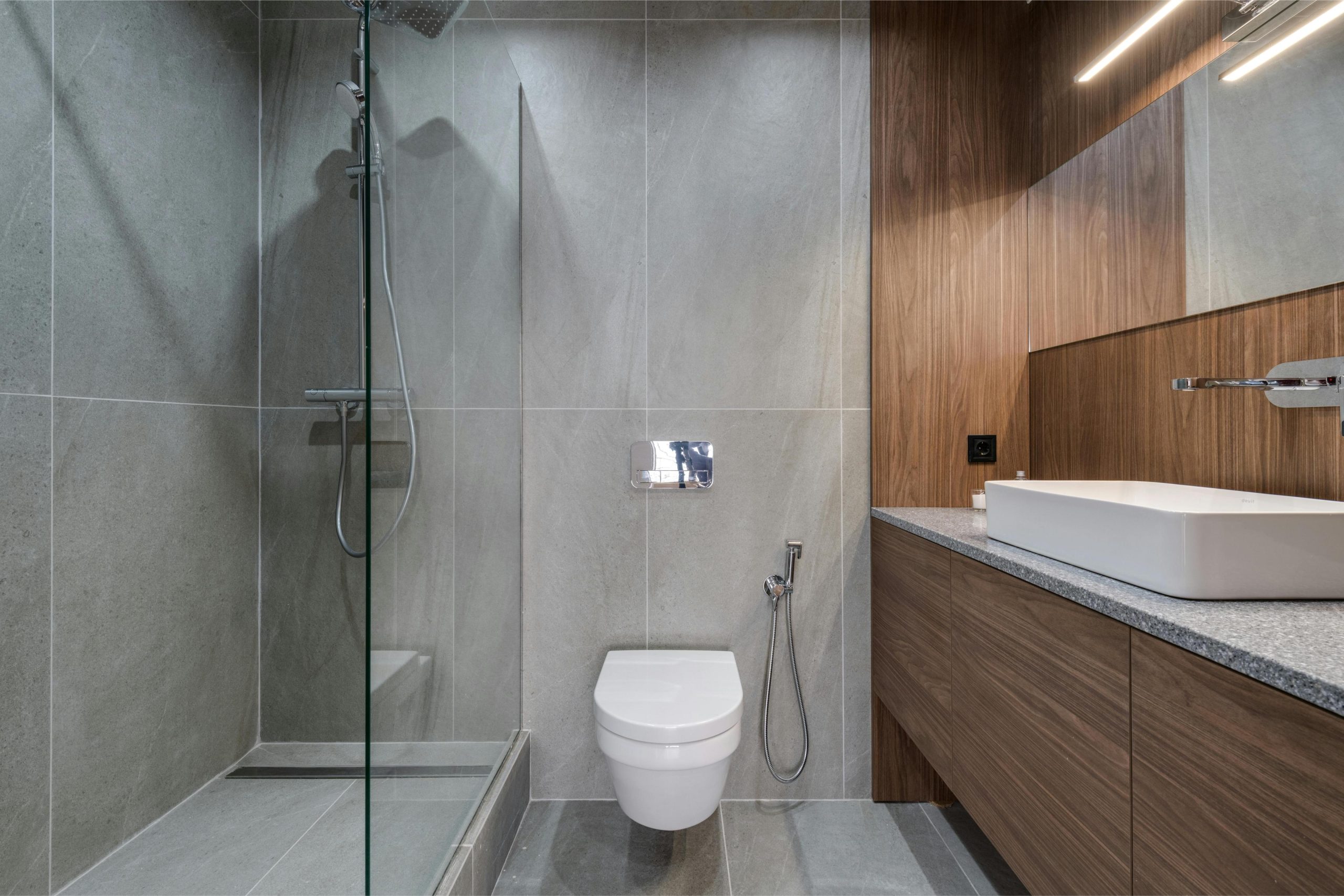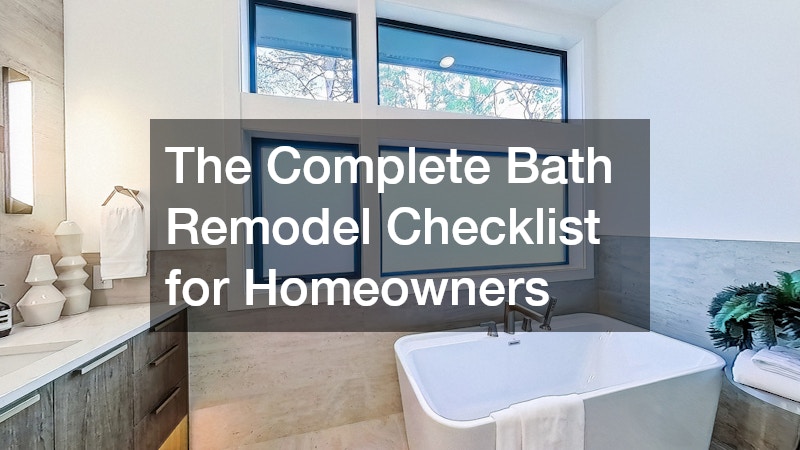Bathroom remodeling is one of the most rewarding home improvement projects. Whether you’re upgrading fixtures, replacing tiles, or redesigning the layout, a bathroom remodel can significantly increase your home’s value and functionality. However, one of the most common questions homeowners ask is: how long does a bathroom remodel take? The answer depends on the scope of your project, the size of your bathroom, and whether you’re doing it yourself or hiring professionals.
In this article, we’ll break down a comprehensive timeline, discuss potential delays, and provide tips to streamline the process.
Factors That Affect Remodel Duration

The time it takes to remodel a bathroom can vary widely. Key factors include:
- Bathroom Size: A small powder room can take less than a week, while a master bathroom may take several weeks.
- Scope of Work: Cosmetic updates like paint or fixtures are faster than full renovations involving plumbing or structural changes.
- Permits and Inspections: Projects that require plumbing or electrical work may need permits, which can add days or weeks.
- Availability of Materials: Custom tiles, vanities, or specialty fixtures can delay progress if they are back-ordered.
- DIY vs Professional: Professionals work faster, but DIY projects can save money at the cost of longer timelines.
Typical Bathroom Remodel Timeline
Bathroom remodeling can be a complex project, but breaking it into clear steps helps you manage time, budget, and expectations. The timeline below assumes a standard full bathroom remodel, from planning to finishing touches.
1. Planning & Design (1–2 Weeks)
Planning is the foundation of any successful remodel. Taking the time to carefully design the space can save headaches later.
- Budget & Priorities: Determine how much you’re willing to spend and what upgrades are essential (e.g., shower replacement vs cosmetic improvements).
- Materials Selection: Choose tiles, flooring, cabinetry, vanity, countertops, lighting, paint, and fixtures. Consider durability, water resistance, and style.
- Layout & Upgrades: Decide whether you’ll maintain the current layout or move plumbing fixtures. Options include walk-in showers, freestanding tubs, or double vanities.
- Contractors vs DIY: Decide which tasks you will handle yourself and which require professionals. For plumbing, electrical, and structural changes, hiring licensed contractors is strongly recommended.
- Permits & Approvals: If your remodel involves plumbing, electrical, or structural changes, check local building codes and obtain necessary permits.
Pro Tip: Create a visual plan or 3D layout to anticipate potential spacing issues and ensure all materials coordinate.
2. Demolition (1–3 Days)
Demolition clears the space for your new bathroom, but it can reveal hidden issues like mold or water damage.
- Turn Off Utilities: Shut off water, electricity, and gas if applicable.
- Remove Fixtures: Carefully take out the toilet, vanity, sink, bathtub, and shower.
- Strip Walls & Flooring: Remove tiles, vinyl, or laminate flooring. Take care to avoid damaging subfloors or plumbing.
- Dispose of Debris: Rent a dumpster or plan a disposal method to keep the site safe and clean.
Note: Larger bathrooms, or those with older construction, may take longer to demolish, especially if walls or subfloor repairs are needed.
3. Plumbing & Electrical (2–5 Days)
Plumbing and electrical work are critical for functionality and safety. This phase often dictates whether your project stays on schedule.
- Plumbing Adjustments: Move or extend supply and drain lines if changing the layout.
- Install Fixtures: Rough-in plumbing for sinks, showers, tubs, and toilets.
- Electrical Work: Update wiring for lights, outlets, switches, and exhaust fans. Consider adding energy-efficient LED lighting or smart switches.
- Inspection: Schedule inspections as required by local codes to avoid future compliance issues.
Tip: Using licensed professionals ensures your work meets safety standards and prevents costly mistakes.
4. Structural & Wall Work (1–3 Days)
Structural repairs and wall preparation provide a strong foundation for finishes.
- Repair & Reinforce: Fix or replace damaged studs, joists, or subflooring. Check for water damage or mold.
- Drywall/Cement Board: Install new drywall for non-tiled walls and cement board for wet areas like shower surrounds.
- Waterproofing: Apply waterproof membranes or coatings in shower/tub areas to prevent leaks and future damage.
This phase ensures your bathroom is durable and ready to receive tiles, cabinets, and other finishes.
5. Flooring Installation (1–3 Days)
Flooring sets the tone for your bathroom’s overall look and feel.
- Prepare Subfloor: Level and repair any uneven spots. Ensure the subfloor is clean and dry.
- Install Flooring: Tile, vinyl, or waterproof laminate are common choices. Follow manufacturer instructions carefully.
- Grouting & Sealing: Allow grout to cure completely. Seal grout and flooring as recommended.
- Trim & Baseboards: Install trim or baseboards to complete the flooring look.
Tip: Installing flooring before vanities and toilets protects new fixtures from scratches or grout spills.
6. Tile Work & Wall Finishes (2–5 Days)
Tile installation is both functional and decorative but can be time-consuming, especially for complex patterns.
- Measure & Plan: Mark tile layouts carefully to minimize cuts and ensure symmetry.
- Install Tiles: Use spacers for consistent grout lines. Ensure tiles are level and aligned.
- Grouting: Allow adhesive to set before applying grout. Clean excess grout for a polished finish.
- Paint & Wall Finishes: Complete non-tiled wall areas with paint or moisture-resistant coatings.
Tip: Mosaic or patterned tiles may extend the timeline due to intricate placement.
7. Cabinetry & Fixture Installation (2–4 Days)
Cabinets, vanities, and fixtures define your bathroom’s functionality and style.
- Cabinet Placement: Ensure cabinets are level, plumb, and securely anchored.
- Countertops: Install countertops carefully, sealing edges to prevent water damage.
- Plumbing Fixtures: Attach sinks, faucets, tubs, and shower hardware. Test for leaks.
- Accessories: Install towel bars, mirrors, shower doors, and other functional items.
Pro Tip: Follow manufacturer installation instructions closely to maintain warranties and avoid water damage.
8. Lighting & Electrical Finishes (1–2 Days)

Finishing electrical work ensures your bathroom is both safe and visually appealing.
- Install Fixtures: Attach ceiling lights, vanity lights, and exhaust fans.
- Test Electrical: Confirm all switches, outlets, and lighting work properly.
- Optional Enhancements: Add dimmers, under-cabinet lighting, or smart features for convenience.
Tip: Test lighting and electrical before moving in furniture or décor to easily address any issues.
9. Final Touches & Inspection (1–2 Days)
The finishing phase brings everything together for a polished, usable space.
- Caulking & Sealing: Seal edges around tubs, sinks, and countertops to prevent water damage.
- Paint Touch-Ups: Address any scuffs or chips from installation.
- Cleaning: Deep clean tiles, floors, cabinets, and fixtures.
- Final Inspection: Ensure plumbing, electrical, and structural work passes local code requirements.
- Decorating: Add rugs, towels, and accessories to complete the look.
Tip: Take photos of the completed bathroom for reference and warranty documentation.
Common Delays That Affect Bathroom Remodels
Even with careful planning, unexpected delays can happen:
- Material backorders or shipping delays.
- Weather impacting deliveries for exterior bathrooms or ventilation work.
- Hidden damage found during demolition, like mold or water damage.
- Scheduling conflicts with contractors or inspectors.
Tip: Add a buffer of 1–2 weeks to your initial timeline to accommodate delays.
Tips to Speed Up Your Remodel
A bathroom remodel can feel lengthy, but proper planning and strategic choices can significantly reduce the overall timeline. By preparing in advance and making smart decisions, you can avoid delays and keep the project moving efficiently.
- Order Materials in Advance: Purchase tiles, flooring, fixtures, and cabinetry before demolition begins. Having everything on hand prevents waiting for back-ordered items and keeps contractors on schedule.
- Hire Licensed, Experienced Contractors: Work with professionals who have verified references and a track record of completing projects on time. Experienced crews can anticipate challenges and work more efficiently.
- Plan Household Bathroom Usage: If you have multiple bathrooms, decide which will remain in use during the remodel. For single-bath homes, consider temporary solutions such as a portable toilet to prevent disruption.
- Limit Layout Changes: Moving plumbing or electrical lines can add significant time and cost. Keeping the existing layout for sinks, tubs, and toilets reduces delays and simplifies inspections.
- Maintain Clear Communication: Stay in regular contact with your remodeling team. Quickly addressing questions or issues prevents misunderstandings that can stall progress.
Implementing these strategies ensures your remodel progresses smoothly while maintaining quality, helping you enjoy your new bathroom sooner.
Cost vs Time Considerations
When planning a bathroom remodel, understanding how your budget impacts the timeline is essential. Generally, the more extensive the remodel, the longer it will take to complete. Proper planning can help you balance costs and efficiency while achieving the desired results.
- Cosmetic Updates: Simple changes like painting walls, replacing cabinet hardware, and upgrading faucets or light fixtures typically take 1–2 weeks. These updates are relatively inexpensive and can give your bathroom a fresh look without major construction.
- Partial Remodel: Installing new flooring, cabinets, and updated fixtures usually requires 2–4 weeks. This type of remodel involves more labor and coordination but avoids major structural or plumbing changes.
- Full Remodel: Projects that include changing the layout, moving plumbing or electrical lines, tiling walls or floors, and replacing tubs or showers can take 4–8 weeks or longer. Full remodels are more expensive and require careful planning to prevent delays.
By aligning your budget with the scope of work, you can set realistic expectations for both cost and time. This balance ensures your bathroom remodel is efficient, high-quality, and completed on schedule.
Conclusion
Knowing how long a bathroom remodel takes helps homeowners plan for time, budget, and lifestyle adjustments. While timelines vary depending on the size of the bathroom and scope of work, a well-organized plan ensures a smoother, less stressful experience. From planning and demolition to plumbing, flooring, fixtures, and final touches, each step contributes to creating a functional and stylish bathroom. By understanding the timeline and preparing for potential delays, you can enjoy a successful remodel that enhances your home’s value and your daily comfort.



